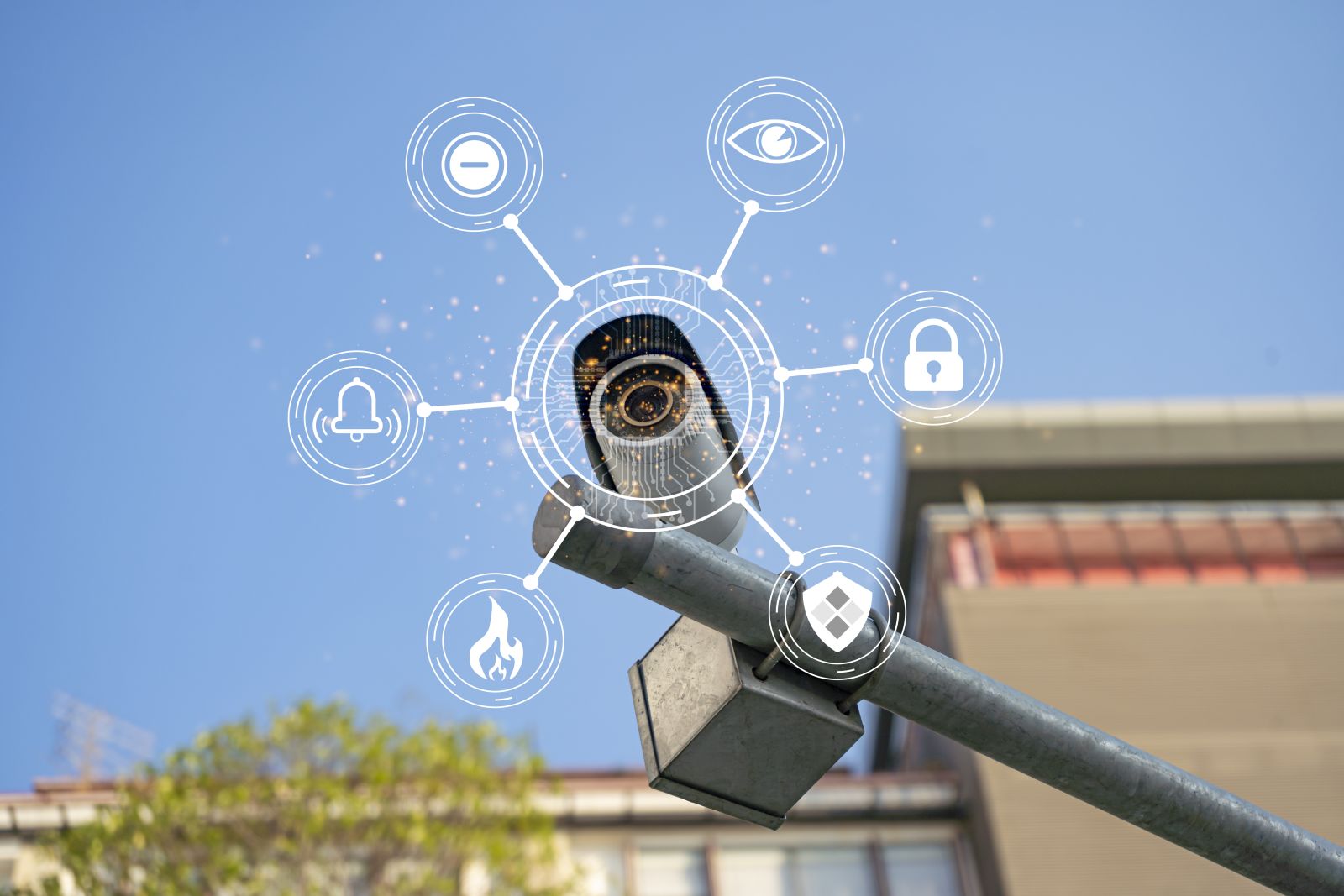2025.05.05
Surveillance systems capture video through cameras and digitally store it to enable real-time monitoring, anomaly alerts, and video playback.
As technology advances, surveillance has evolved from traditional analog setups to smart video analytics, improving monitoring efficiency and enhancing security protection.
This article introduces five common surveillance technologies, outlining their advantages and ideal applications to help you choose the best solution for your needs.
|
|
1. Analog SurveillanceWith the rise of digital technology, surveillance systems are generally divided into analog and digital types. Analog systems are traditional surveillance setups where cameras capture video transmitted via coaxial cables to a Digital Video Recorder (DVR) for storage and playback. These systems have evolved from standard definition (SD) to higher resolution formats like AHD (Analog High Definition), TVI, and CVI. Some devices support 1080p or even 4K video, improving image clarity. Ideal use case:
To improve transmission distance, reduce interference, and simplify wiring, twisted pair transmission technology can be used to carry AHD signals over just 2-wire twisted cables. This method also offers protection against static, surges, and lightning. A single network cable can transmit video from up to 4 AHD cameras simultaneously, boosting transmission efficiency.
2. IP Surveilance Systems (Network-based Architecture)Digital surveillance is based on Internet Protocol (IP) architecture. With advancements in networking, digital systems allow greater flexibility, such as integrating analog cameras via video servers and controlling input/output devices through software. For example, an electronic map can show the status of an emergency button, triggering alarms and activating onsite buzzers when pressed. Core components:
This architecture supports remote monitoring, real-time video access, and integration of legacy analog equipment, enhancing system flexibility. Ideal use cases:
3. PoE Surveillance Systems (Power over Ethernet)PoE technology allows data and power transmission over a single Ethernet cable, reducing the need for separate power installations. Common PoE standards:
Ideal use cases: Surveillance environments that require simplified wiring to reduce installation costs
4. Smart Video Analytics SurveillanceTraditional monitoring relies on human operators, who may experience fatigue and miss critical events. Intelligent video surveillance technologies (IVS, IVA, AI VMS) use AI and image recognition to automatically detect anomalies and trigger alerts, significantly improving monitoring efficiency and safety. Common smart video analytics features:
Ideal use cases: High-security locations like airports, stadiums, traffic control, banks, campuses, and government facilities
5. Hybrid Surveillance Systems (Analog + AI Integration)Hybrid systems combine analog, digital, and AI video analytics technologies, allowing legacy analog cameras to be upgraded to AI-enabled surveillance. With one-stop solutions such as AI VMS Server or AI VMS Mini, analog cameras can be integrated into IP architectures on-site. Ideal use cases:
Limitations of Other Surveillance Systems
Future TrendsThe future of surveillance focuses on intelligence and flexibility, ensuring long-term system effectiveness and management efficiency. Consider scalability and smart capabilities to adapt to technological advancements and enhance security. About SparkSpark is dedicated to providing advanced surveillance technology solutions and one-stop services. Whether you’re new to security or a professional, we tailor solutions to meet your needs. For expert advice and technical support, contact us today!
|
Surveillance systems capture video through cameras and digitally store it to enable real-time monitoring, anomaly alerts, and video playback.
As technology advances, surveillance has evolved from traditional analog setups to smart video analytics, improving monitoring efficiency and enhancing security protection.
This article introduces five common surveillance technologies, outlining their advantages and ideal applications to help you choose the best solution for your needs.
|
|
1. Analog SurveillanceWith the rise of digital technology, surveillance systems are generally divided into analog and digital types. Analog systems are traditional surveillance setups where cameras capture video transmitted via coaxial cables to a Digital Video Recorder (DVR) for storage and playback. These systems have evolved from standard definition (SD) to higher resolution formats like AHD (Analog High Definition), TVI, and CVI. Some devices support 1080p or even 4K video, improving image clarity. Ideal use case:
To improve transmission distance, reduce interference, and simplify wiring, twisted pair transmission technology can be used to carry AHD signals over just 2-wire twisted cables. This method also offers protection against static, surges, and lightning. A single network cable can transmit video from up to 4 AHD cameras simultaneously, boosting transmission efficiency.
2. IP Surveilance Systems (Network-based Architecture)Digital surveillance is based on Internet Protocol (IP) architecture. With advancements in networking, digital systems allow greater flexibility, such as integrating analog cameras via video servers and controlling input/output devices through software. For example, an electronic map can show the status of an emergency button, triggering alarms and activating onsite buzzers when pressed. Core components:
This architecture supports remote monitoring, real-time video access, and integration of legacy analog equipment, enhancing system flexibility. Ideal use cases:
3. PoE Surveillance Systems (Power over Ethernet)PoE technology allows data and power transmission over a single Ethernet cable, reducing the need for separate power installations. Common PoE standards:
Ideal use cases: Surveillance environments that require simplified wiring to reduce installation costs
4. Smart Video Analytics SurveillanceTraditional monitoring relies on human operators, who may experience fatigue and miss critical events. Intelligent video surveillance technologies (IVS, IVA, AI VMS) use AI and image recognition to automatically detect anomalies and trigger alerts, significantly improving monitoring efficiency and safety. Common smart video analytics features:
Ideal use cases: High-security locations like airports, stadiums, traffic control, banks, campuses, and government facilities
5. Hybrid Surveillance Systems (Analog + AI Integration)Hybrid systems combine analog, digital, and AI video analytics technologies, allowing legacy analog cameras to be upgraded to AI-enabled surveillance. With one-stop solutions such as AI VMS Server or AI VMS Mini, analog cameras can be integrated into IP architectures on-site. Ideal use cases:
Limitations of Other Surveillance Systems
Future TrendsThe future of surveillance focuses on intelligence and flexibility, ensuring long-term system effectiveness and management efficiency. Consider scalability and smart capabilities to adapt to technological advancements and enhance security. About SparkSpark is dedicated to providing advanced surveillance technology solutions and one-stop services. Whether you’re new to security or a professional, we tailor solutions to meet your needs. For expert advice and technical support, contact us today!
|



